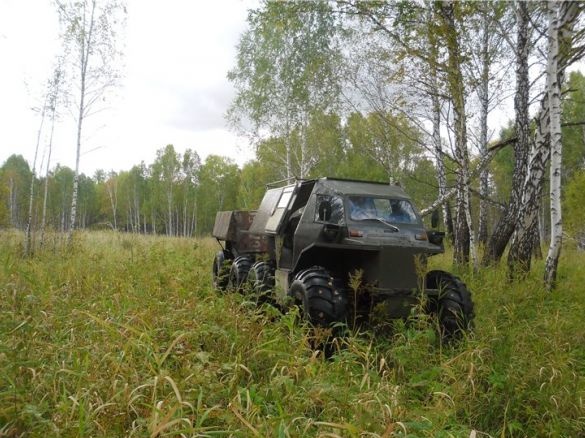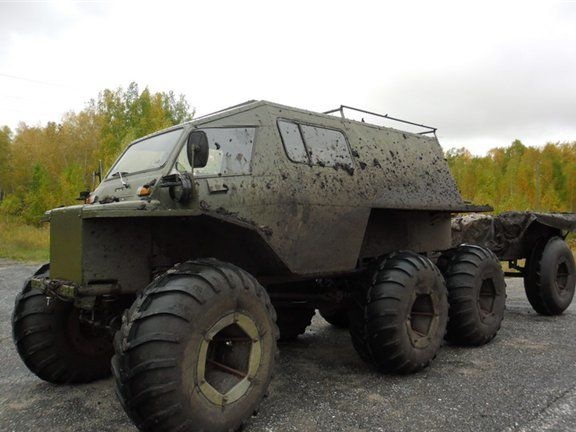
The all-terrain vehicle 6 to 6 will be designed for comfortable hunting / fishing delivery with the opportunity to spend the night in it if necessary, and it should also carry with it all the necessary gear, weapons, food supply and naturally the most necessary spare parts for unforeseen breakdowns.
To better understand the capabilities of the all-terrain vehicle, we will consider what was originally laid in it, that is, what units and structures were used during construction:
1) The author decided to supply the wheels from the Urals, the sidewall thickness after peeling was 4 mm.
2) Bridges from UAZ were used, which are still slightly lightened.
3) The steering column from UAZ
4) the all-terrain vehicle frame will be welded independently from a cardan pipe with dimensions of 76 by 3.
5) struts on the front suspension, ZIL-130 shock absorbers and cornfield springs (rear)
6) Internal combustion engine from 2101.
7) Gearbox from the same 2101
8) Gazelle steering column
Well, now we proceed to a more detailed analysis of the stages of construction of an all-terrain vehicle.
To begin with, the author decided to rip off the wheels from the Urals. 4 layers of cord on the sidewall were cut, after which the thickness of the sidewall was about 4 mm.
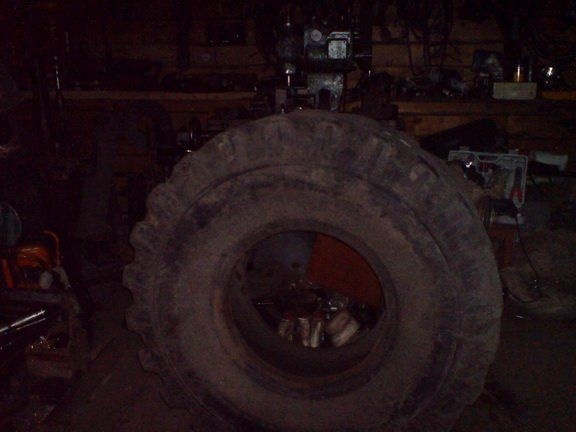
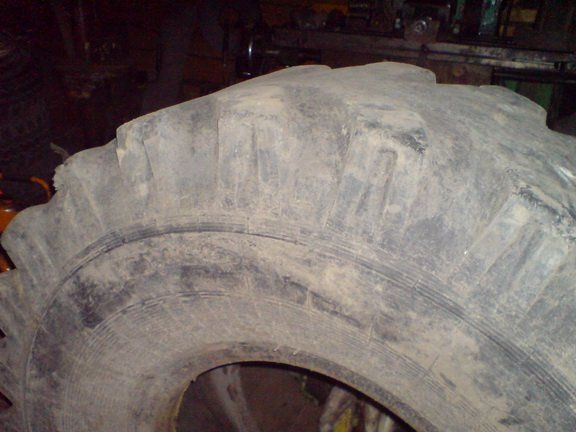
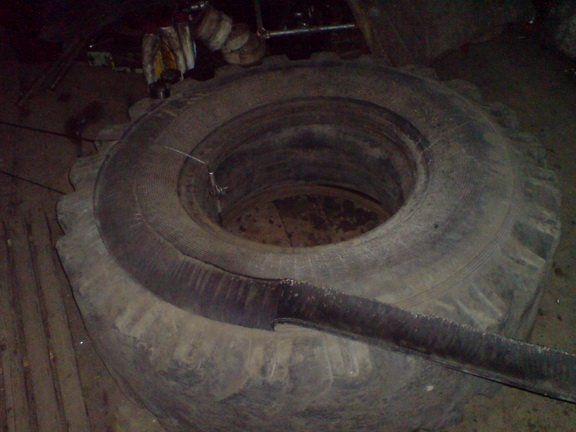
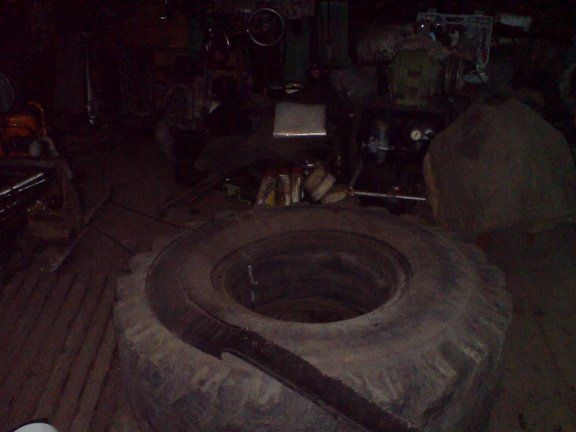
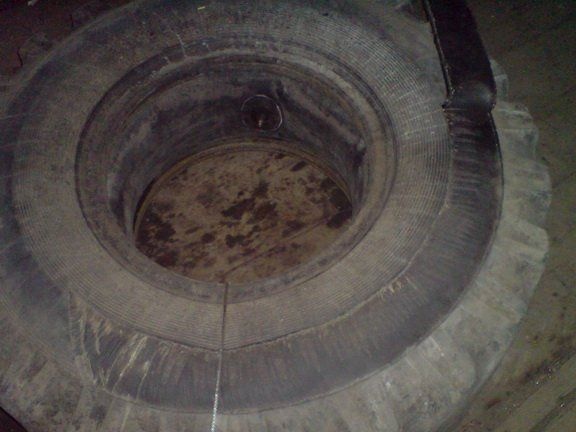
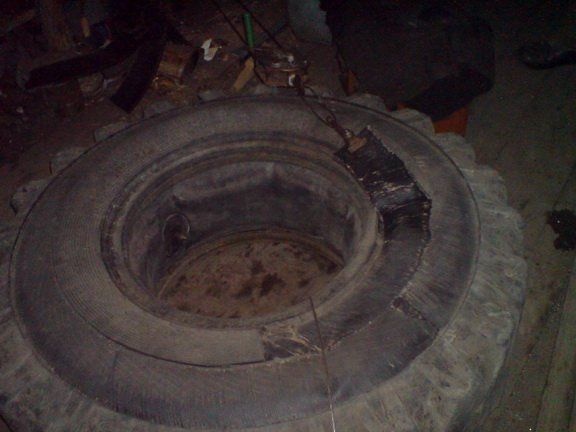
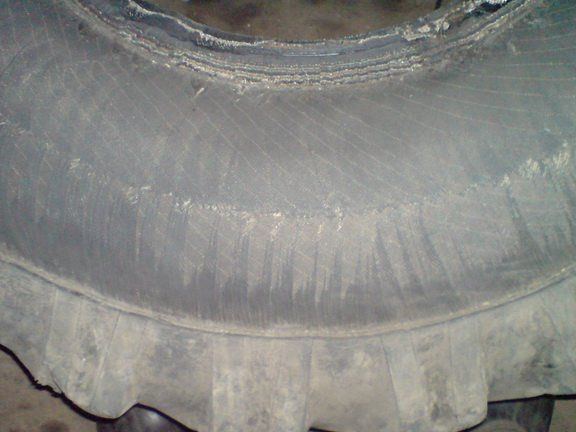
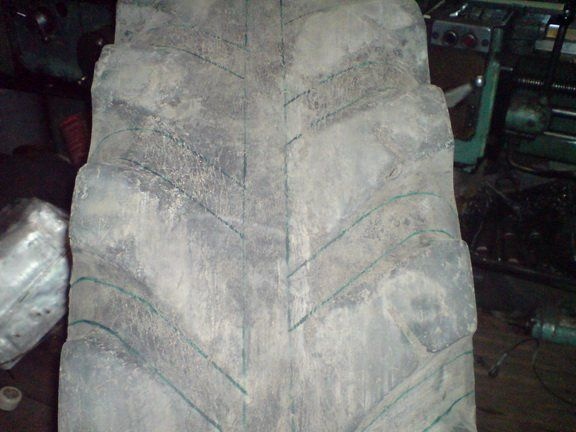
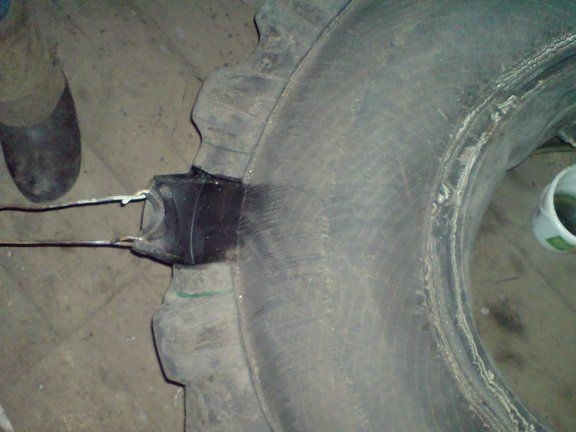
Then the author began to prepare bridges from the UAZ, namely, work to relieve their weight.
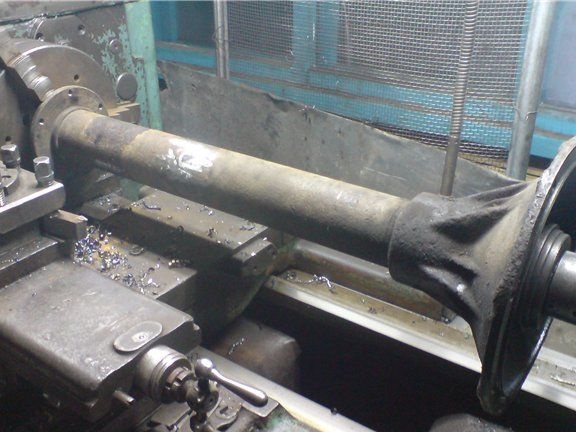
Then, work was carried out to finalize the steering column from the UAZ, which will be used on this type of swamp.
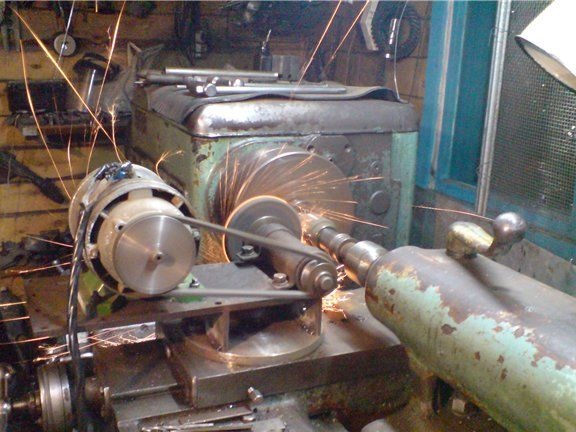
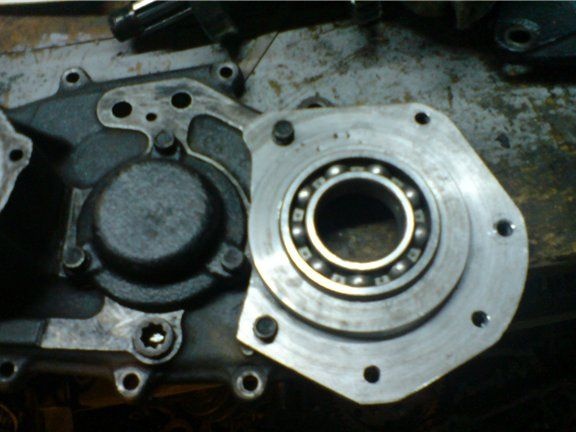
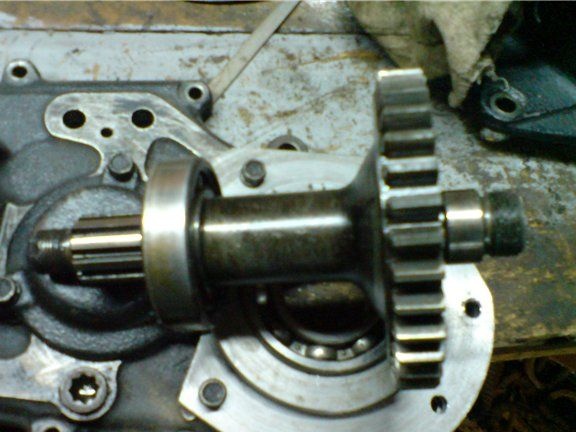
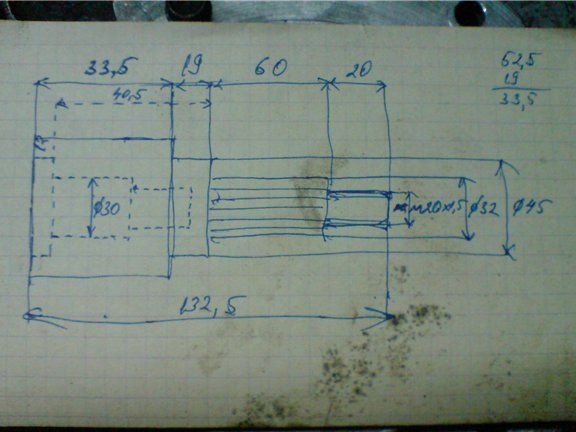
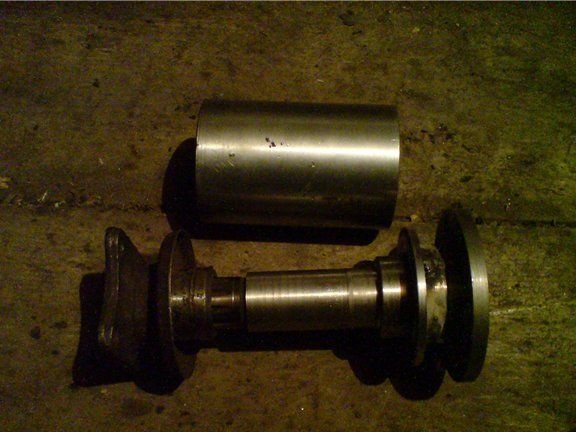
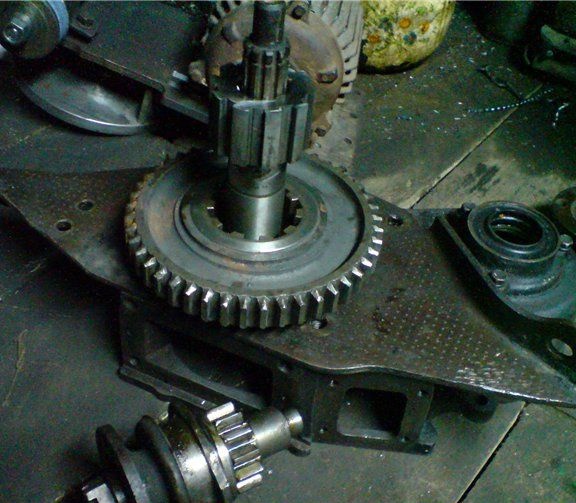
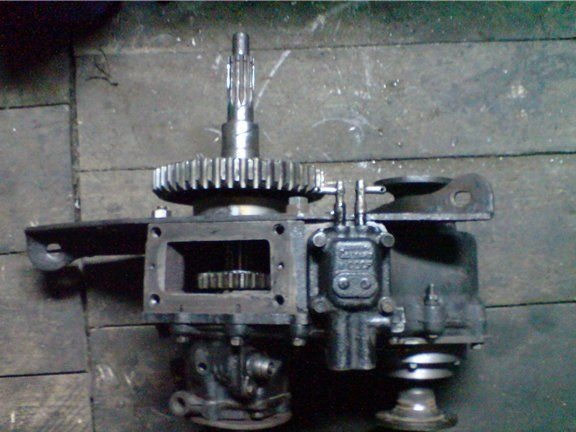
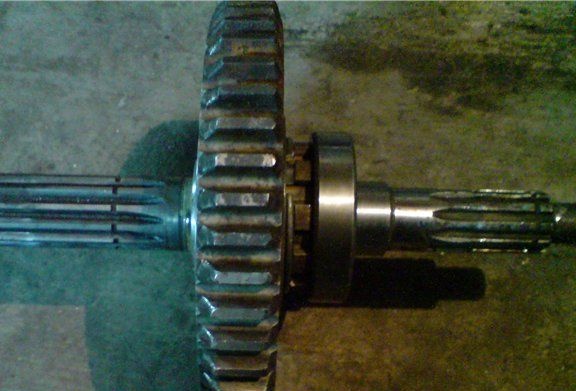
And here is a photograph with already set bridges on a frame made of 76 by 3 gimbal.
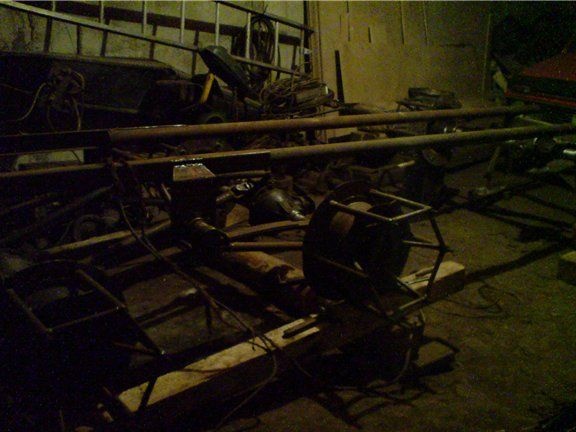
Then it was decided to start installing the transfer case, the picture below shows how it will be located inside the frame. I also add that the author will make an additional third pillar, for reliability and reinforcement of the entire structure.
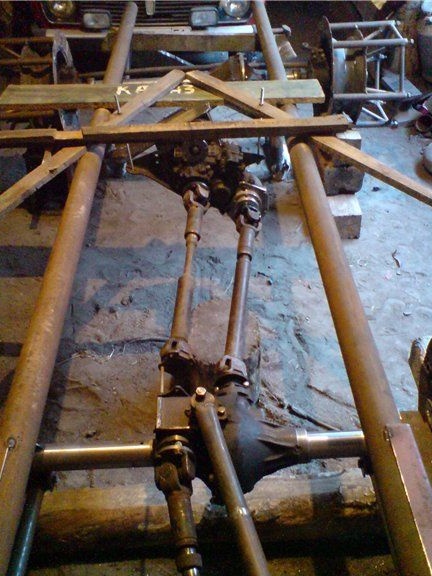
The front of the frame, it was decided to slightly narrow:
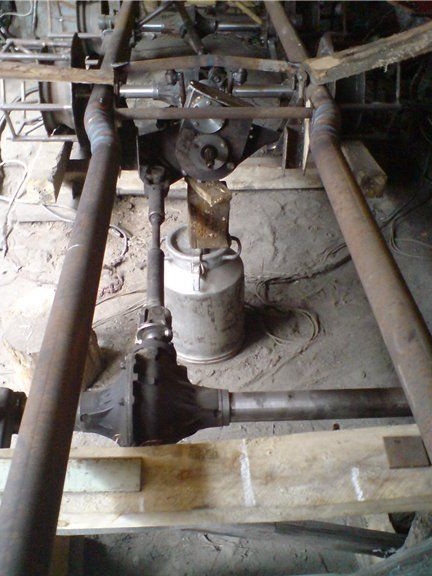
A donor in the form of 2101 VAZ with documents for the engine was also purchased. The purchase cost the author about 5000 rubles.
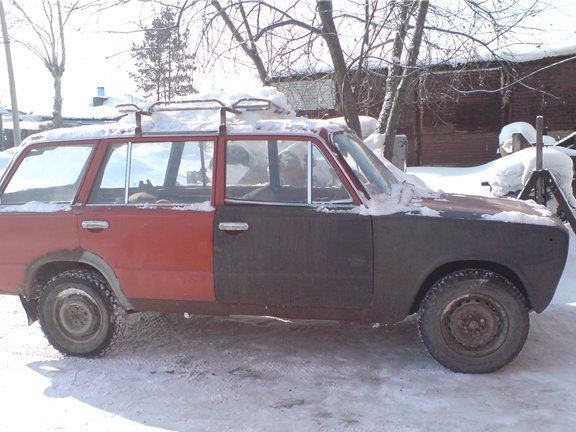
It was mounted ball on the front axle under the A-lever.
And it was decided to make the transmission similar to the design of the transmission from the ZIL-157.
Then the author extracted an engine from the donor 2101, as well as a gearbox.
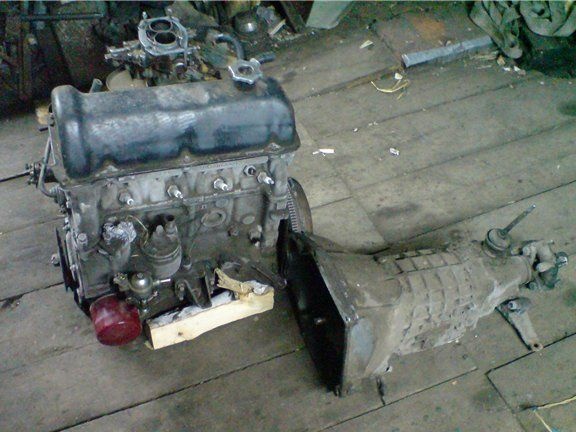
Engine specifications are as follows:
Volume 1.2l, power 58.7 hp at 5600 rpm and 8.7 kg at 3400 rpm
The author had ideas for its modernization, regarding boring under the VAZ-2108 pistons, and to de-energize the engine for a-80 gasoline, as well as to reduce the torque in terms of speed.
The author proceeded to try on the installation of the engine in the frame design:
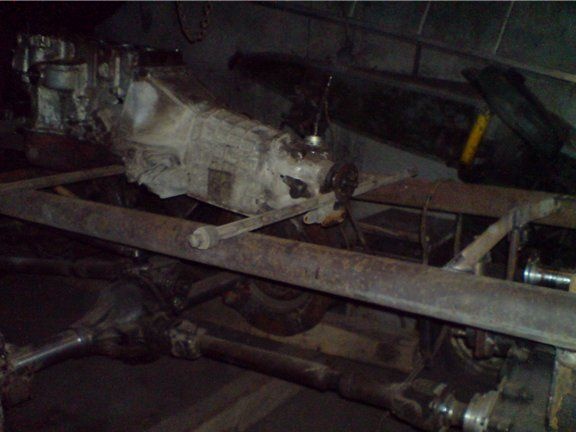
Then it was determined the most suitable place for installation:
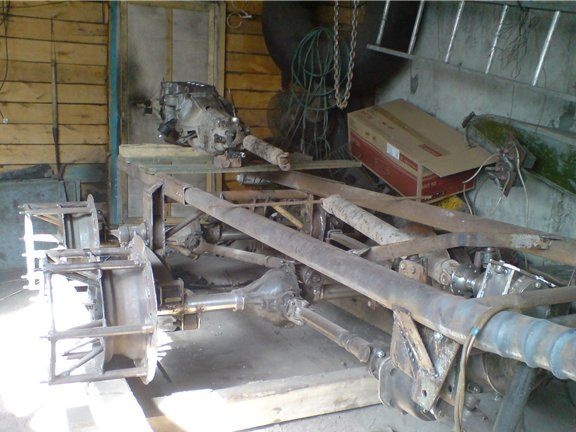
Final work on the front suspension:
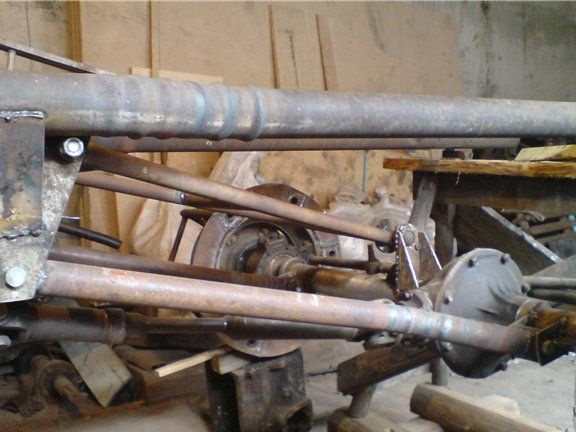
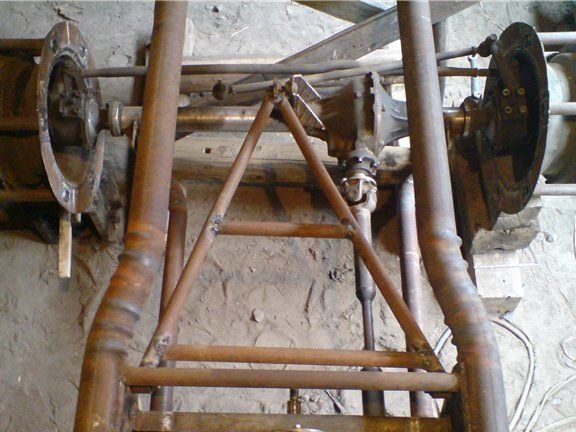
The steering column from the Gazelle is installed:
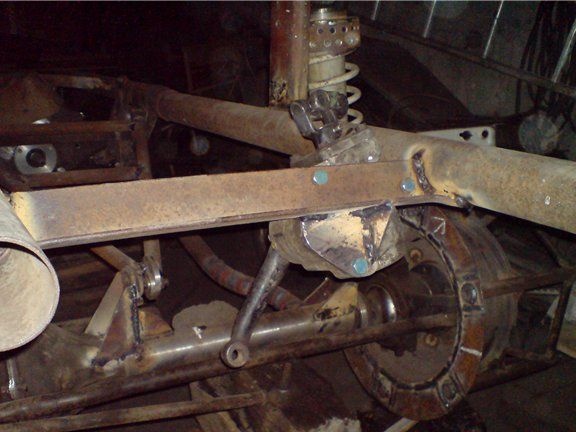
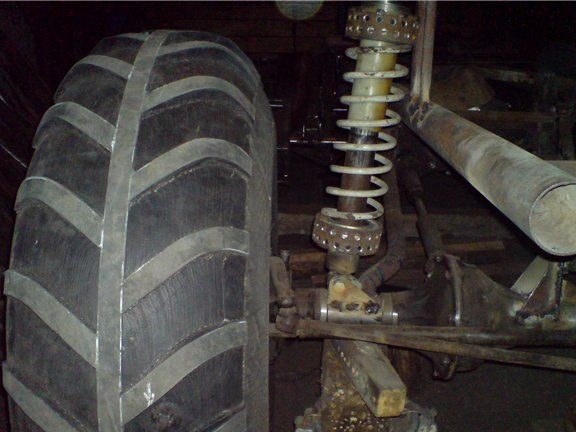
This is how all-terrain vehicle steering is implemented:
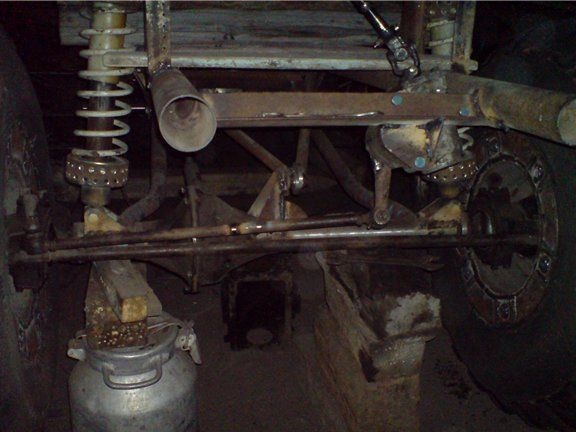
Then the author proceeded to strapping the frame, on which the floor of the all-terrain vehicle cabin will be located.
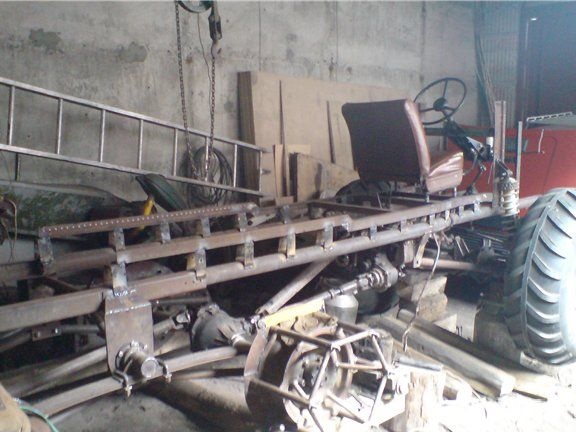
Two cardan joints were connected to obtain one, but longer:
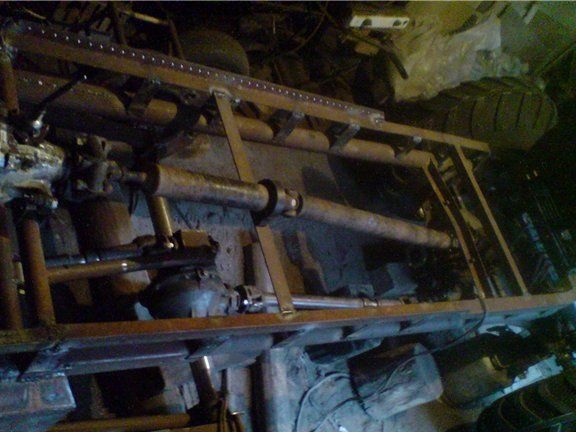
The lower levers are attached to the bridge through the blocks from the UAZ (front spring suspension of the UAZ).
The next step, the author painted the frame, and also fully assembled the balancer with chippers and limiters. In addition, all driveshafts were fitted and the main wheels were mounted on the frame.
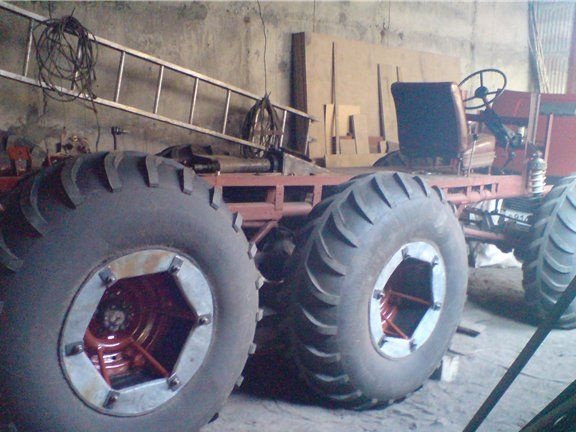
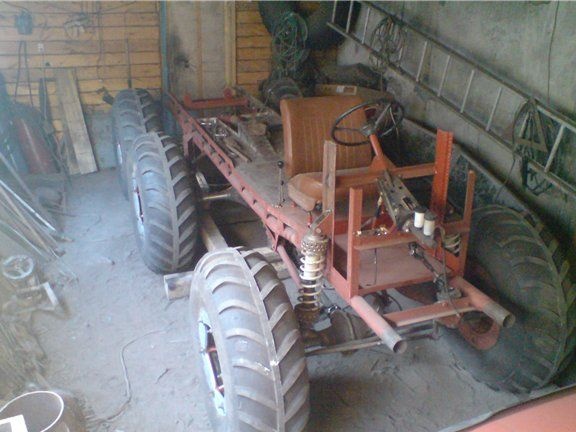
Below is a view of an all-terrain vehicle already capable of driving, as well as with an already installed driver's seat.
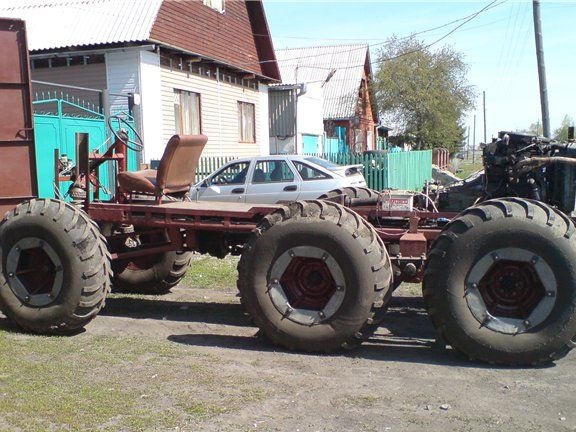
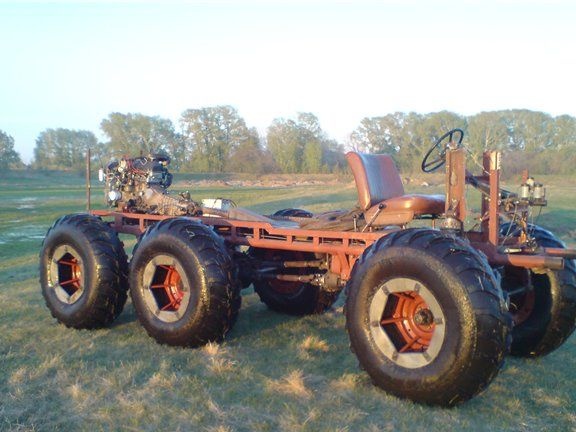
The weight of the all-terrain vehicle in the design shown in the image was 1 ton and 200 kilograms, but this is a very approximate calculation.
Subsequently, the author will add the frame to the cabin and this will increase the rigidity of the structure, which will greatly affect its reliability.
Here is a photo of the suspension travel:
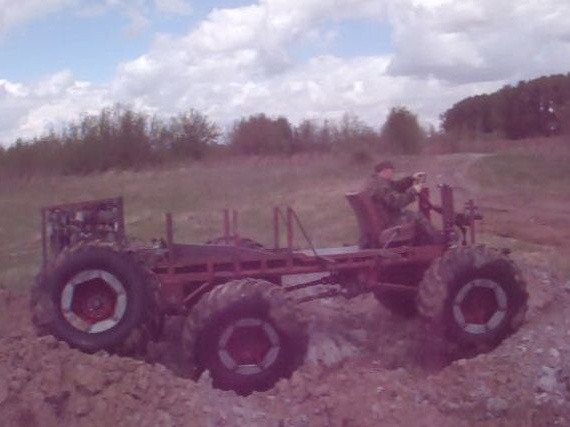
Suspension work demonstrated in the video:
The first work on the frame of the all-terrain vehicle cabin and its contours:
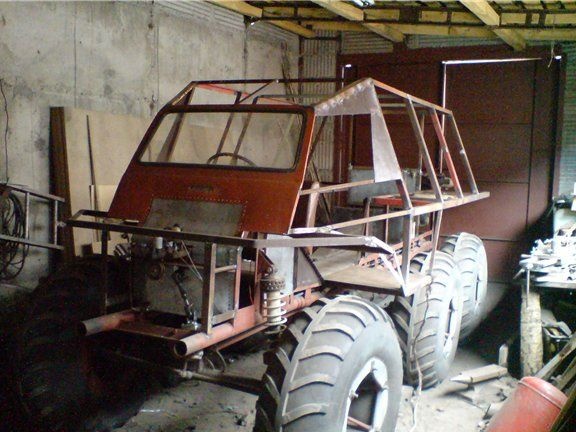
The author installed cooling for the engine using a radiator from UAZ (three-row) and installed a fan from the Gazelle.
Here's what happened, only without a door and hatch:
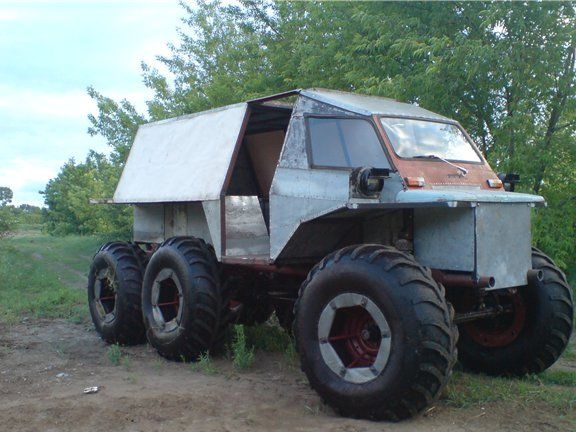
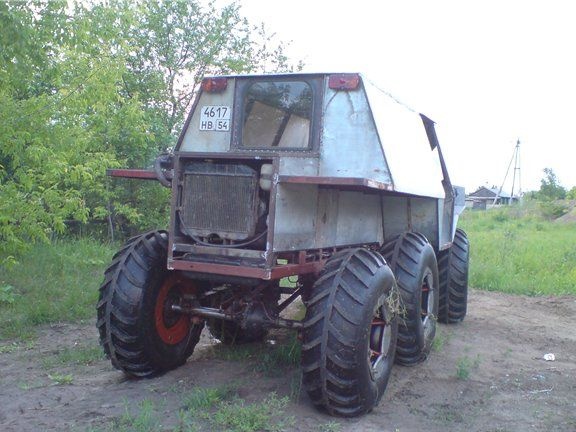
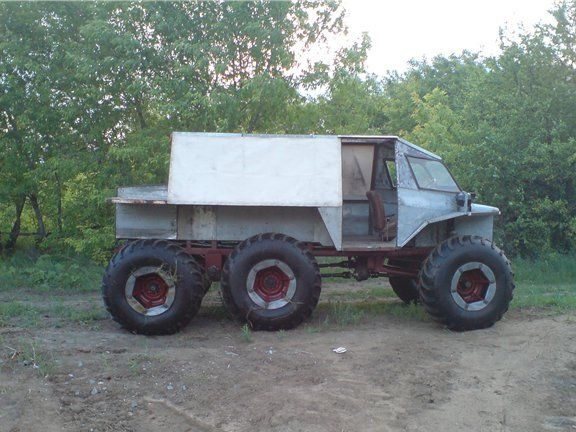
Regarding the door, the author plans to make it look like a complete set of an armored personnel carrier door, that is, it will consist of two halves, one will recline up and the other down.
The total distance of the next exit was about 60 km, and 10 liters of fuel were spent, that is, the consumption will be less than 20 liters per hundred, which is pretty good for an all-terrain vehicle of this mass.
Thanks to a good engine, as well as excellent assembly, the movement is on forest dirt roads, which is the same on asphalt and runs at a speed of 45 km / h. In the bog and swamps 10 km \ hour.
So the increase in mass did not play any role on the engine.
And also the all-terrain vehicle was tested afloat. Here is a view of an all-terrain vehicle after overcoming water obstacles:
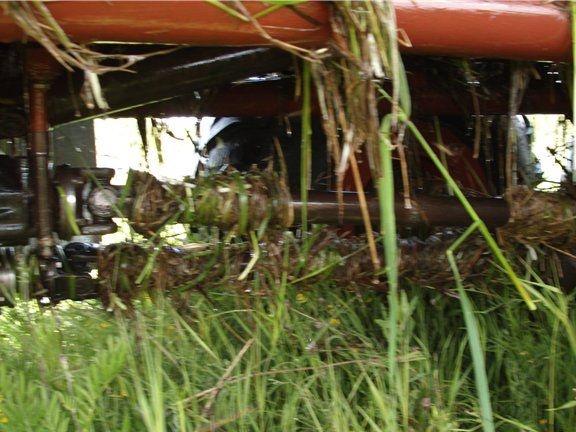
And here you can see the driver’s workplace:
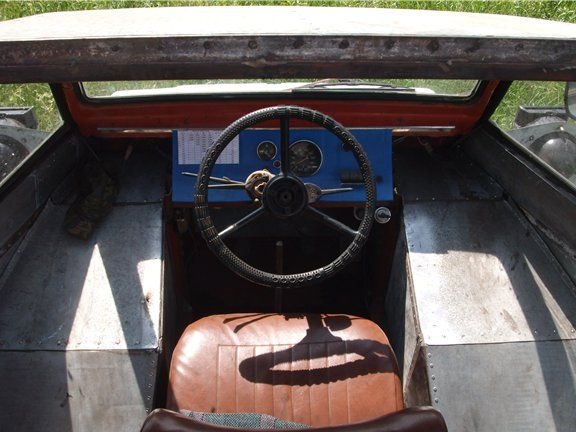
Video with overcoming the swamp (shooting is from the roof of the all-terrain vehicle):
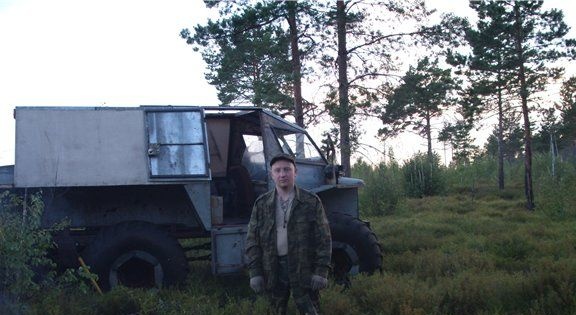
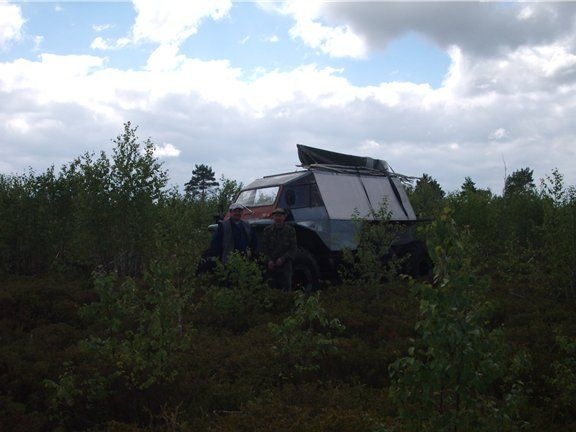
Of the subsequent upgrades, it is planned to install two gearboxes, since there is a cam lock in the rear axle. And the author also notes that for this all-terrain vehicle larger wheels are needed than are installed now.
This is justified by the fact that in the place of operation of the all-terrain vehicle there is a lot of wetland, and narrow wheels cut the swamp, while they ride widely.
But despite these shortcomings, the bolted car behaves well.
Here is a video of climbing the track:
Due to overload at the exit, a finger bent on the ball middle bridge.
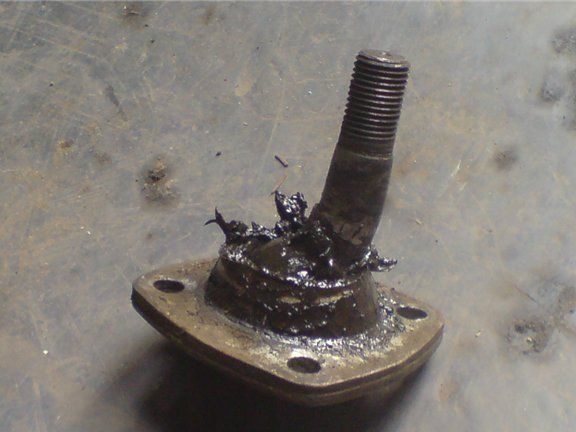
Then, the author decided to tear off the tires for the all-terrain vehicle. Tires were taken from VI-3.
It was decided to make the wheels in four layers, below is a picture of the first wheel:
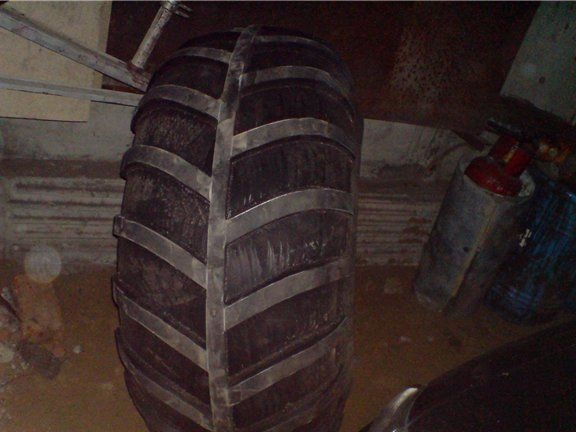
Compared to the previous ones, these wheels are much wider and heavier - 40kg (Roberta 30mm, fangs 40mm wide)
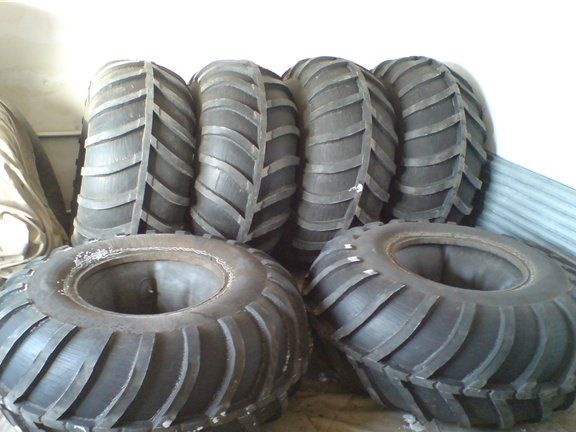
These are the new wheels for the all-terrain vehicle.
Therefore, instead of the plastic bushings of the balancer, the correct bushings were made:
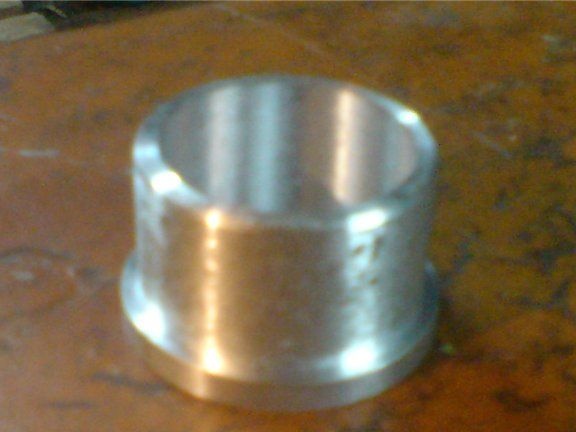
Also, during the technical inspection, the gearbox was moved, which showed no signs of wear, and therefore the gearbox design is one of the best in this all-terrain vehicle.
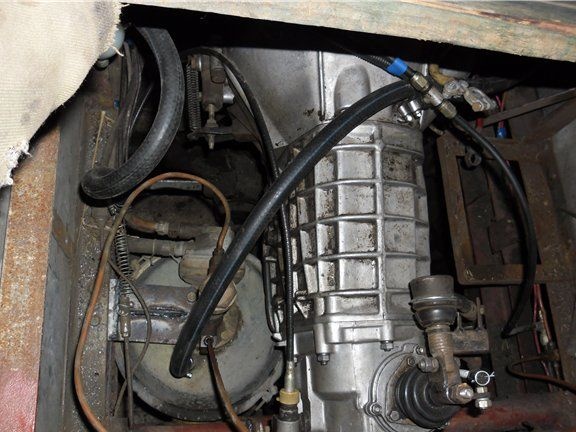
But the bearings had to be replaced.
A five-speed gearbox was also installed, and the support mount was redone for it.
A GVUT brake system was installed from gas-53 and a half of GTZ from gas-53 - due to the fact that the previous brakes were rather weak for such an assembly, there were no problems with the brakes after installing this system.
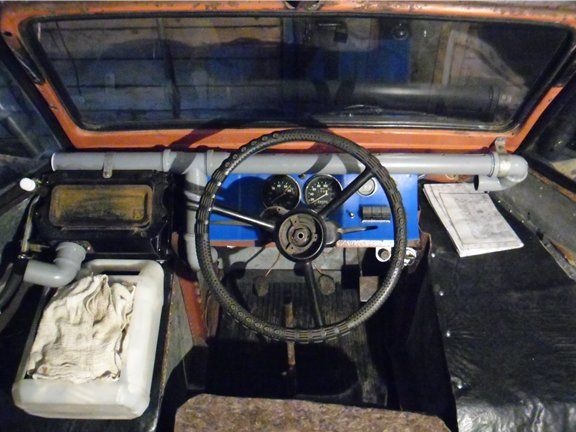
And also in order not to freeze in winter, a VAZ heating system was installed with an additional pump, although even without a pump the engine pumps the stove perfectly and it is quite hot in the cabin.
Still been made trailer, on an axis with hubs from UAZ, and spring suspension:
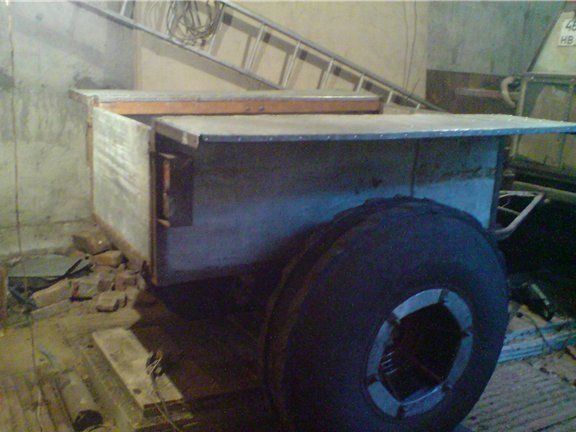
The length of the road train in the hitch was 8 meters.
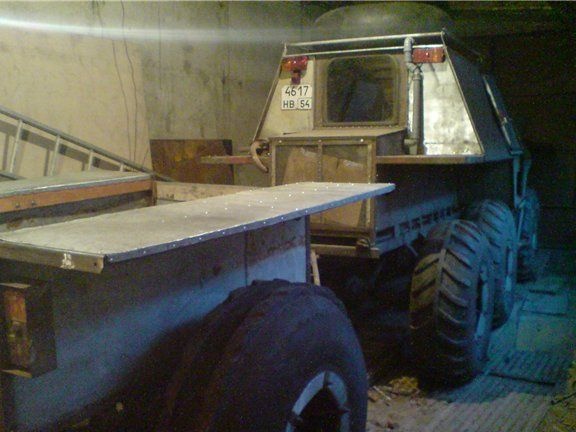
After these upgrades, the all-terrain vehicle has become a little worse on roads, the reason for this is too much weight and large wheels, for which the power of this engine is no longer enough. Especially hard in fourth gear, the engine does not rise above 3000 rpm.
A few minor improvements to the design of the all-terrain vehicle cabin were also made.
Below are photos of a fully finished off-road vehicle with new rubber and paint, as well as an all-terrain vehicle interior:
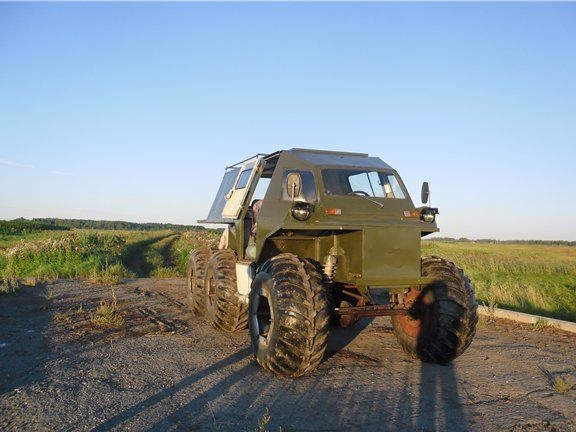
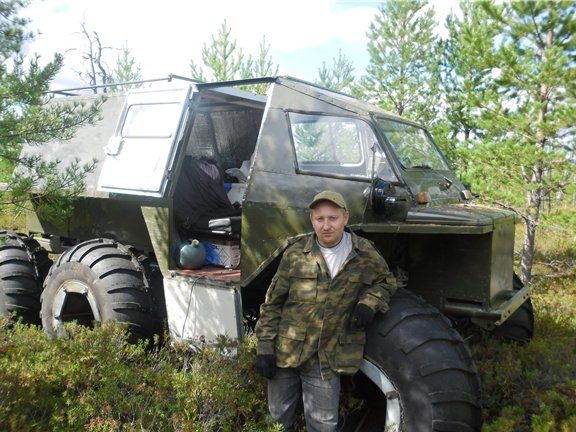
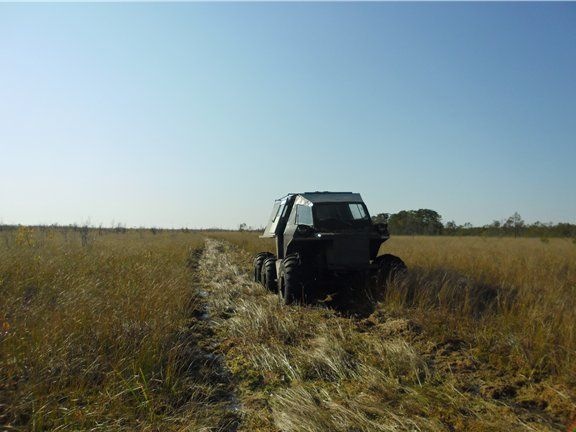
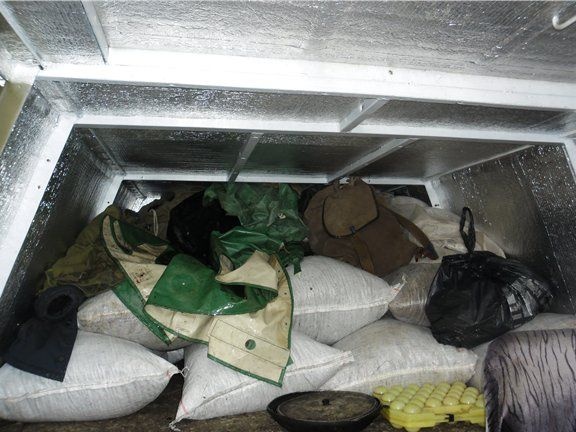
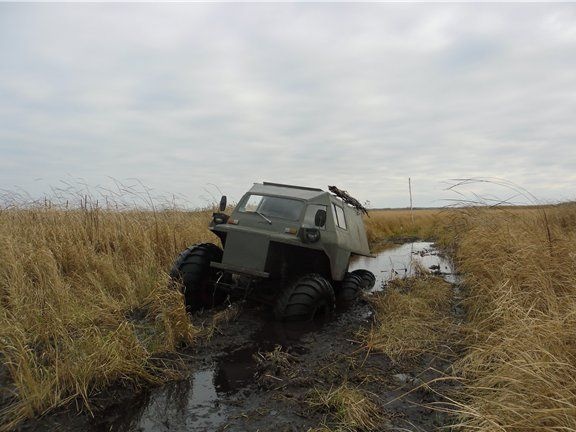
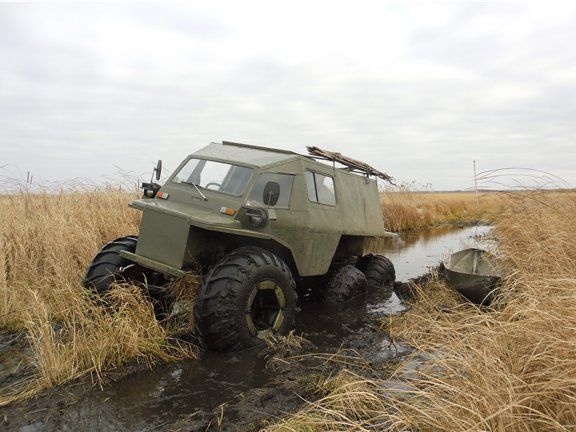
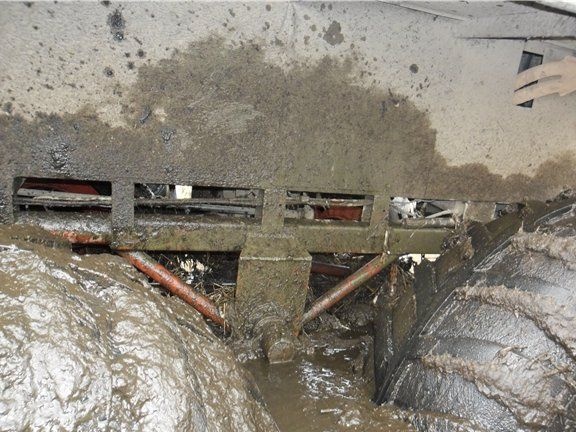
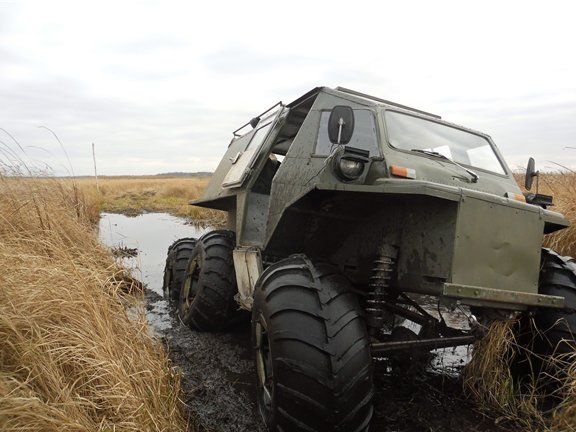
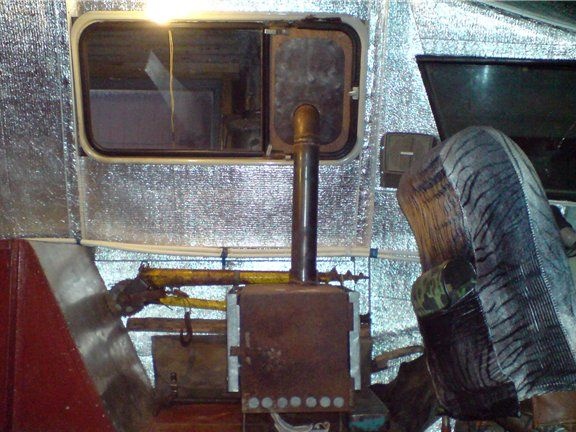
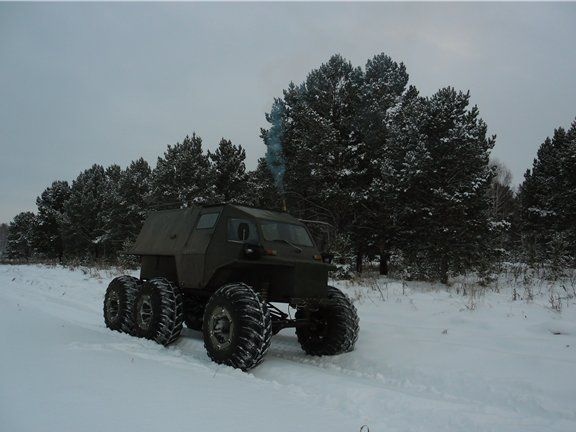

The author of this all-terrain vehicle "Max" from the NSO Kuibyshev.

